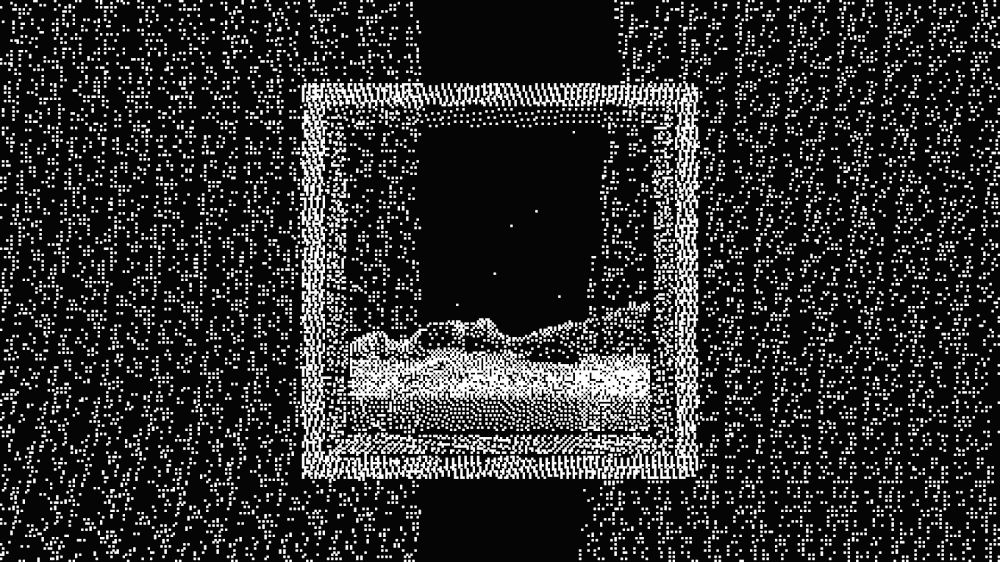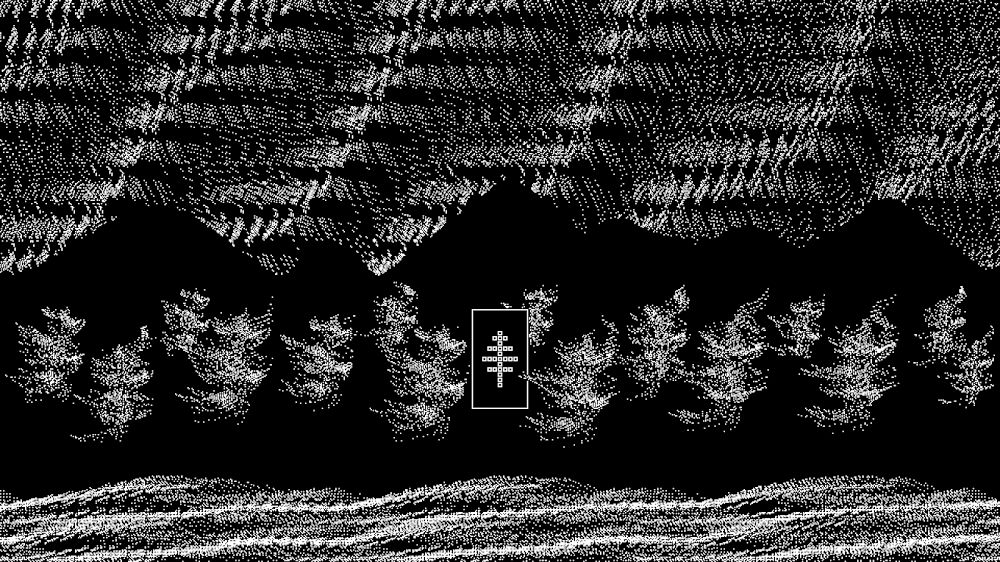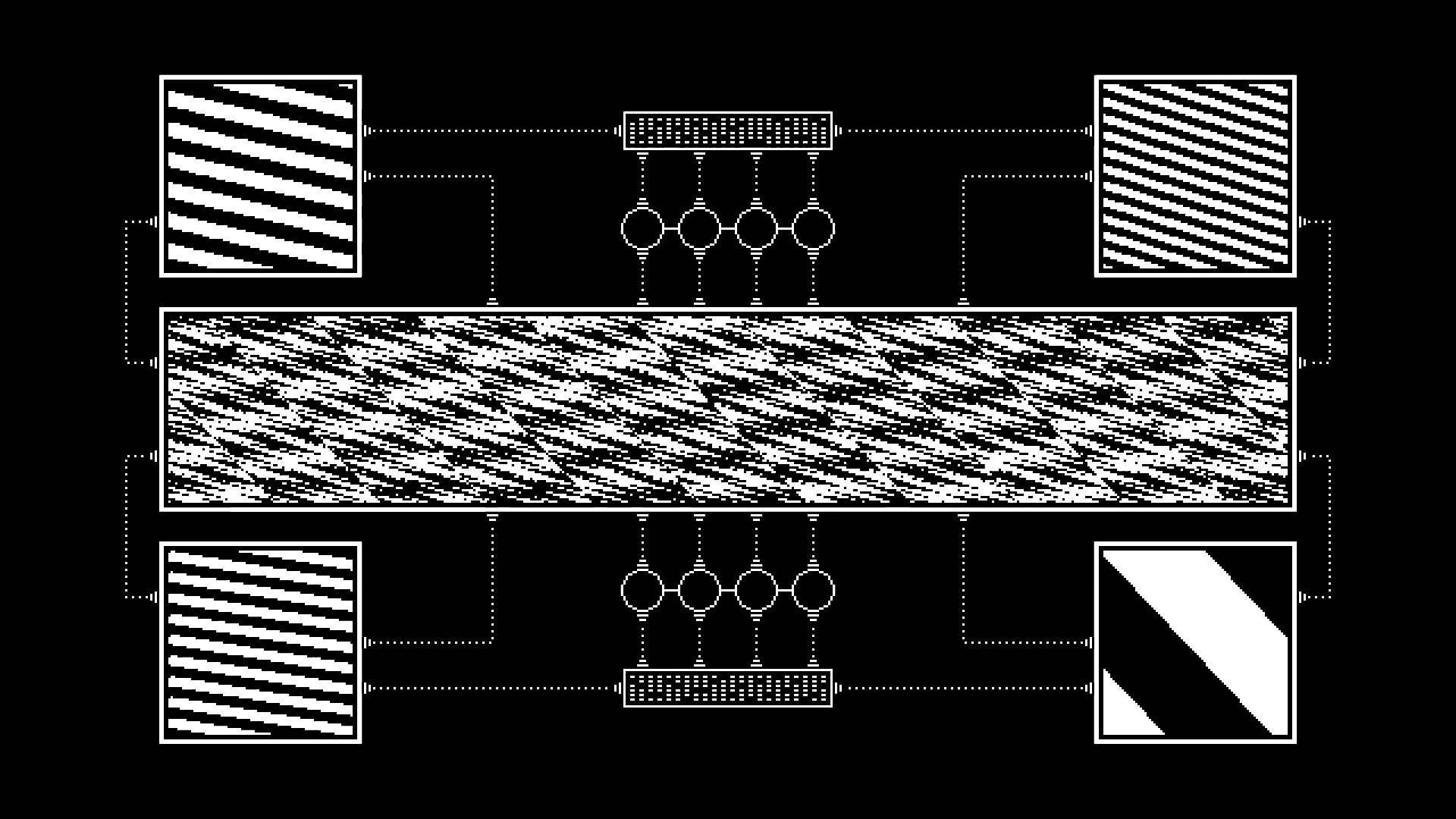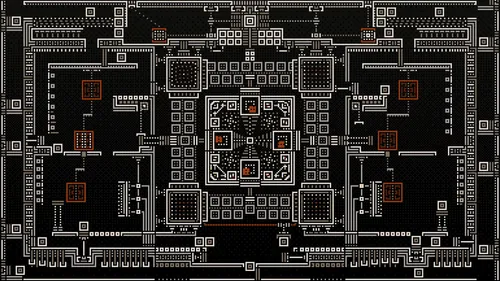Subscribe to get the latest on artists, exhibitions and more.
Monolithic Machines: In Conversation with Kerim Safa

Mimi Nguyen: Your work is heavily influenced by early abstract animations and computer games. Can you tell us more about what drew you to these sources of inspiration and how they have shaped your artistic practice?
Kerim Safa: These sources of inspiration share a common thread of simplicity, interactivity, and innovation. Growing up in the late 80s/early 90s with access to computers and game consoles, I found a deep connection to these mediums, which later became the foundation for my creativity. From animating my simple drawings to experimenting with programming to create small games, then to music making - the primitive ways of experimentation have always triggered a profound connection within me.
Early abstract animations use basic shapes, colors, and patterns to convey emotions and ideas, showcasing the power of simplicity in visual storytelling. Similarly, early computer games, due to technical limitations, relied on abstract graphics, fostering creativity within constraints.
What I also value from these influences is the playfulness they bring to my work. Playfulness is essential in both the creation process and the viewer's experience. As Brian Eno once said, 'Children learn through play, adults play through art.' As for a lot of artists, this sentiment captures the essence of my artistic practice too.
Kerim Safa, Monolithic Machines, 2023. Pictured on the facade of SODA, Manchester.
Mimi Nguyen: Pixels play a significant role in your art. Could you explain why you find the pixel aesthetic and the limitations it imposes on your work appealing?
Kerim Safa: The significance of pixels in my art is multifaceted and deeply rooted in my creative journey through visual art and music. Their appeal lies in their dual nature, representing both the abstract and the concrete within the digital world.
There is an unignorable appeal to utilizing a grid-based system that imposes a certain type of structure and precision that, to me at least, runs counter to the fluid nature of human existence. The process takes on meditation-like qualities, especially since a big part of my practice involves manually placing pixels on a digital canvas.
Apart from pixels being the building blocks of digital images, I tend to draw parallels with the minimalist music of the 20th century, which celebrates the beauty of repetition and constrained materials. Pixels challenge me to operate within defined boundaries - even so, at some point, I challenged myself to create using only black and white pixels, and I still continue to do so.
In a world obsessed with detail, pixels stand as a testament to the lasting charm of simplicity, invoking nostalgia while remaining relevant in the digital age. They offer a canvas to distill complexity into minimalist forms, encouraging viewers to discover beauty within constraints.
Kerim Safa, Monolithic Machines, 2023. Pictured on the facade of SODA, Manchester.
Mimi Nguyen: What do you mean by manually placing pixels?
Kerim Safa: "Manually placing pixels" refers to a hands-on, craftsmanship-driven method that involves meticulously positioning each pixel frame-by-frame. It's simply drawing with the mouse.
While I occasionally incorporate programming into certain aspects of my work, the dominant approach remains reminiscent of old-school animation practices. Executing this process involves a substantial amount of mouse-clicking and pixel-counting, which, despite being time-consuming, offers me a unique state of peace and concentration that I can't achieve through other means. In conversations with generative artists, I've observed that many share a similar relationship with their code, regarding it as an integral part of their art. They often view the code itself as a form of art, which I can appreciate, even though my experience with code editors has consistently felt like a barrier between me and the immediate output. It's a matter of personal history with the tools.
Coming from a background of drawing and playing musical instruments, I've developed a preference for creative processes that are instantaneous and instinctive. Just as when I strike a drum and expect an immediate sound or touch the canvas with my brush to see the paintstroke instantaneously, I find a similar connection between my actions and their outcomes in the pixel-by-pixel approach.
Kerim Safa, Monolithic Machines, 2023. Pictured on the facade of SODA, Manchester.
Mimi Nguyen: Many of your artworks incorporate cyclical mechanisms and mathematically-inspired patterns. How do you approach the balance between art and mathematics in your creations, and what kind of messages or emotions do you hope to convey through this combination?
Kerim Safa: While embracing the cyclical nature imposed by the GIF format, I consciously design my compositions, particularly those with machine themes, to create the illusion of a continuous narrative on the screen. Achieving this effect often involves extensive calculations to maintain the desired sense of continuity while keeping the composition interesting.
My fascination with cyclical musical structures, rooted in African and Indian traditions, from my time in music school, has significantly influenced my approach. In my animation practice, I began exploring the idea of each element having its rhythmic cycles, akin to polyrhythmic patterns in music composition. This multidisciplinary perspective has opened up exciting new horizons for my creative process.
Driven by my interest in engineering and machines, I incorporate abstractions of industrial elements into my work, resulting in visuals that may appear cold, emotionless, or sometimes humorously nihilistic. These qualities are deliberate, except in the instances where my descriptions offer too many insights - as I am doing right now :) Nevertheless, my artworks hold personal significance as they conceal symbols from the periods of my life while I obsessively work on them. While some pieces carry explicit messages in their titles or descriptions, a common thread among them is an invitation to engage with a puzzle, to lose oneself within it, and ultimately, to collaboratively find the solution.
Kerim Safa, Monolithic Machines, 2023. Pictured on the facade of SODA, Manchester.
Mimi Nguyen: Your work explores ideas related to systems, perpetuity, perception, and representations. Could you delve into how these concepts are central to your art and how they manifest in your new work, Monolithic Machines, presented on the facade of SODA in Manchester?
Kerim Safa: As I reflect on my body of work, I recognize that these central ideas, at times intertwining and sometimes explored separately, serve as recurring themes. I've briefly touched on the first three in my previous response, but the notion of representations is also a theme that has always intrigued me both philosophically and artistically.
I've been employing postmodernist ideas on concepts such as hyperreality, simulacrum, sign, and representation in my work for a while. While I ideally try to avoid preconceived notions and conceptualization before I begin crafting a piece, at times, the opposite happens and the concept designs the work. An extreme example of this is a piece I created for a magazine two years ago, titled 'Digital Waste', where I try to reach a specific file size in bytes while stating the file size in the artwork by manually placing pixels. Another example is a more recent work titled 'The Screen' that explores the paradox of authenticity within our digital age.
Kerim Safa, The Screen, 2023.
Derived from the version that is displayed on the façade of the SODA building, Monolithic Machines, is inspired by the dual nature of digital screens. The artwork draws parallels between the LED façade where it's exhibited and the vertical displays that saturate our contemporary digital landscape, including phones, digital billboards, and rotated TVs serving as art installations. The reference to the idle state of a screen as a monolith pays homage to the iconic slab featured in '2001: A Space Odyssey,' a symbol deeply entrenched in popular culture.
Offering a glimpse into an imaginary interconnected system beneath the surface of the monolith, the animation, aligning with my prior machine-themed works, portrays a production line featuring two sets of boxes, one black and one white. These boxes navigate intricate contraptions in a ceaseless loop, continually transforming from one state to another, all without yielding any tangible output. Monolithic Machines elevates the rhythmic machinery motion beyond its practical function, transforming the machine itself into an object of fascination and turning the screens, regardless of their size, into monolithic entities.

Mimi Nguyen: With your art being in the collections of over a thousand individuals, how do you feel about the reception and impact your work has had on a wider scale?
Kerim Safa: My work resonating with that many people is both surprising and deeply fulfilling. Before the emergence of NFTs, I wouldn't have imagined that my artworks, especially those employing bulky pixel graphics, could resonate with such a broad audience. In popular culture, these graphics often evoke associations with retro aesthetics and nostalgia, particularly among a certain generation. While this connection is valid, it only scratches the surface of the broader narrative behind my choice to work with pixels.
Communicating the multiple layers and complexities of pixel-oriented art that goes beyond mere nostalgia can be challenging. Niche digital art communities have existed on the internet for quite some time, albeit somewhat hidden from the mainstream. The emergence of NFTs has allowed some of these communities to rise to the surface and gain more recognition. Pixel-oriented artists, including myself, have benefited from this shift, despite some traditional pixel artists holding reservations about NFTs.
I've been amazed by the sheer number, diversity, and quality of artists and collectors I've encountered in this space. While the volatile nature of the markets can make sustainability a challenge, and the necessity of self-promotion can sometimes feel daunting, I'm incredibly grateful for the opportunity to connect with individuals through my creations. After all, art is fundamentally a conversation – first between the artist and the creation, and then between the creation and its audience.
Kerim Safa
Kerim Safa (b. 1985) is a Netherlands-based artist working with pixels and sounds. His exploration revolves around ideas related to systems, perpetuity, perception, and representations. Safa's practice finds primary inspiration in early abstract animations and computer games, incorporating pixel aesthetics, frame-by-frame animation techniques, and a limited color palette. His artworks often...



